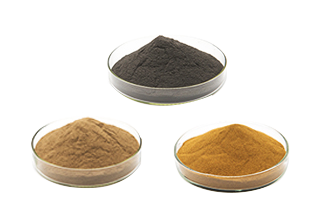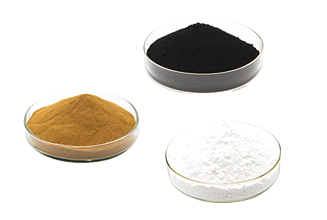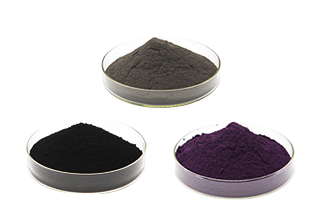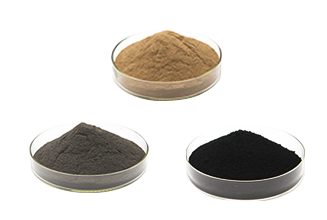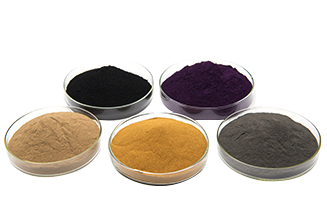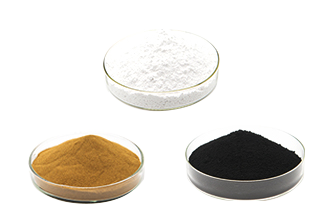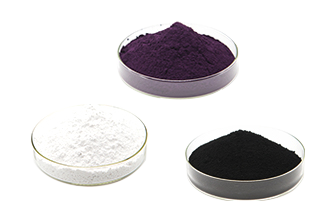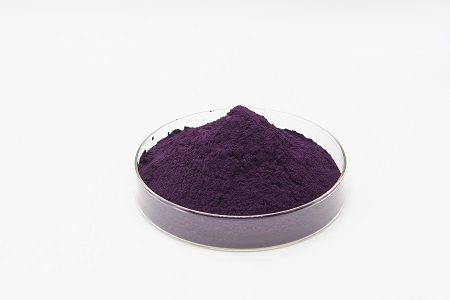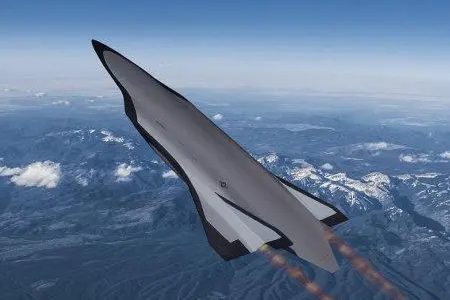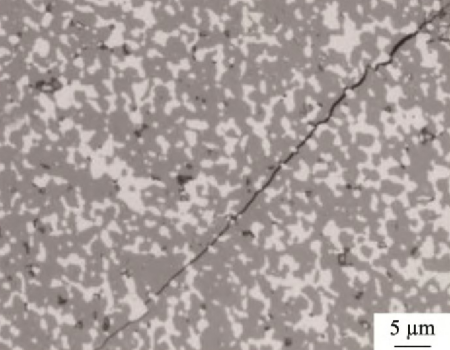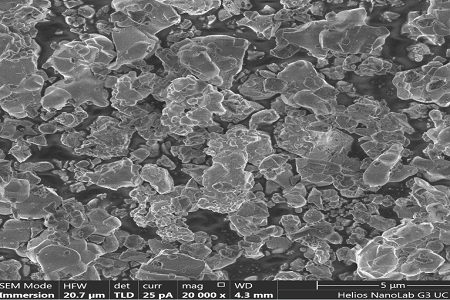What are the requirements of metal 3D printing for raw material powder?
The key raw material of the metal 3D printing process is metal powder, so the quality of its products largely depends on the choice of metal powder raw materials. Its requirements for metal powder mainly lie in the following aspects:
1. The purity of raw material powder
The metal elements mainly contained in the powder raw materials are Fe, Ti, Ni, Al, Cu, Co, Cr, and noble metals Ag, Au, etc. In addition to metal elements, it also contains more or less impurities. Impurity components include Si, Mn, C, S, P, O, etc. in the reduced iron, as well as water and other gases adsorbed on the surface of the powder.
During the molding process of 3D printed products, if the impurities in the powder react with the matrix, it will change the properties of the matrix and affect the quality of the product. Impurities can also cause uneven melting of the powder and easily cause internal defects in the parts. The powder has a large specific surface area. When the powder has a high oxygen content, the metal powder is not only easy to oxidize to form an oxide film, but also causes spheroidization, which affects the density and quality of the parts. Especially in special application areas such as aerospace, customers have stricter requirements on this indicator.
Therefore, it is necessary to strictly control the purity of the raw material powder to ensure the quality of the product, and the metal powder for 3D printing needs to use high-purity metal powder raw materials.
.png)
2. Powder particle shape
Common particle shapes are spherical, nearly spherical, flake, needle, and other irregular shapes. Irregular particles have a larger surface area, which is beneficial to increase the sintering drive. However, the powder particles with high sphericity have good fluidity and uniform powder feeding and spreading, which is beneficial to improve the density and uniformity of the parts. Generally speaking, the higher the sphericity, the better the fluidity of the powder particles. If the sphericity of 3D printing metal powder is above 98%, it is easier to spread and feed powder during printing.
.png)
3. Powder particle size and particle size distribution
The powder is melted and sintered by directly absorbing the energy of laser or electron beam scanning. Small particles have a large surface area, and directly absorb more energy, which is easier to heat up and is more conducive to sintering. In addition, the particle size of the powder is small, the gap between the particles is small, the loose packing density is high, and the compactness of the parts after forming is high, so it is beneficial to improve the strength and surface quality of the product. However, if the particle size of the powder is too small, the powder is prone to adhesion and agglomeration, resulting in a decrease in the fluidity of the powder, which affects the transportation of the powder and the uniform spread of the powder.
Generally, the particle size range of the powder used in metal 3D printing is 15-53μm (fine powder), 53-105μm (coarse powder), and in some cases, it can be widened to 105-150μm (coarse powder). This is because metal printers with different energy sources have different powder particle size requirements. Fine powder and coarse powder should be mixed in a certain proportion, and the appropriate particle size and particle size distribution should be selected to achieve the desired forming effect.
.png)
4. Powder bulk density and tap density
The loose density refers to the density of the powder when it is naturally stacked, and the tap density refers to the density of the powder after vibration. In general, the coarser the particle size of the powder, the better the sphericity, and the greater the loose packing density. The powder with the thickness and fineness can obtain higher loose packing density and lower porosity, and the formed parts will be denser and more compact. better quality.
5. Powder fluidity
The fluidity of the powder directly affects the uniformity of powder spreading or the stability of powder feeding. Too poor fluidity of the powder will easily cause uneven thickness of the powder layer, which will result in uneven metal melting in the scanning area, resulting in uneven internal structure of the part and affecting the forming quality; while the high-fluidity powder is easy to fluidize and deposit evenly. , The powder utilization rate is high, which is beneficial to improve the dimensional accuracy of the 3D printed parts and the uniform densification of the surface.
.png)
6. Cycle performance
After the 3D printing process is over, the unmelted powder left in the powder bed can still be used after being recovered through sieving. But under long-term high temperature environment, the powder in the powder bed will have certain performance changes. Need to match the specific process to select the recovery rate.
All in all, metal 3D printing is a new digital manufacturing technology. Its development will bring changes to our lifestyle and working methods. It is a useful supplement to traditional industries. With the development of science and technology, it will bring huge breakthroughs to 3D printing technology, and 3D printing technology will also develop into the protagonist of the manufacturing industry. If metal 3D printing technology can achieve simple operation, high efficiency, high precision, and low cost, it will bring about a new "industrial revolution".
Hunan Huawei Jingcheng Material Technology Co., Ltd., manufacturer of carbides, borides, nitrides, oxides, silicides, including the powders for for 3D printing. the products performance characteristics:
1. High purity, no impurity phase detected by XRD, low content of metal impurity elements detected by GDMS/ICP;
2. Concentrated particle size distribution, good sphericity, good fluidity, no tube blocking, good quality of 3D printing and thermal spraying.
3d printing Zirconium powder (Zr);
3d-prnting Hafnium powder (Hf);
3d-printing Sphercial titanium powder;
1. The purity of raw material powder
The metal elements mainly contained in the powder raw materials are Fe, Ti, Ni, Al, Cu, Co, Cr, and noble metals Ag, Au, etc. In addition to metal elements, it also contains more or less impurities. Impurity components include Si, Mn, C, S, P, O, etc. in the reduced iron, as well as water and other gases adsorbed on the surface of the powder.
During the molding process of 3D printed products, if the impurities in the powder react with the matrix, it will change the properties of the matrix and affect the quality of the product. Impurities can also cause uneven melting of the powder and easily cause internal defects in the parts. The powder has a large specific surface area. When the powder has a high oxygen content, the metal powder is not only easy to oxidize to form an oxide film, but also causes spheroidization, which affects the density and quality of the parts. Especially in special application areas such as aerospace, customers have stricter requirements on this indicator.
Therefore, it is necessary to strictly control the purity of the raw material powder to ensure the quality of the product, and the metal powder for 3D printing needs to use high-purity metal powder raw materials.
.png)
2. Powder particle shape
Common particle shapes are spherical, nearly spherical, flake, needle, and other irregular shapes. Irregular particles have a larger surface area, which is beneficial to increase the sintering drive. However, the powder particles with high sphericity have good fluidity and uniform powder feeding and spreading, which is beneficial to improve the density and uniformity of the parts. Generally speaking, the higher the sphericity, the better the fluidity of the powder particles. If the sphericity of 3D printing metal powder is above 98%, it is easier to spread and feed powder during printing.
.png)
3. Powder particle size and particle size distribution
The powder is melted and sintered by directly absorbing the energy of laser or electron beam scanning. Small particles have a large surface area, and directly absorb more energy, which is easier to heat up and is more conducive to sintering. In addition, the particle size of the powder is small, the gap between the particles is small, the loose packing density is high, and the compactness of the parts after forming is high, so it is beneficial to improve the strength and surface quality of the product. However, if the particle size of the powder is too small, the powder is prone to adhesion and agglomeration, resulting in a decrease in the fluidity of the powder, which affects the transportation of the powder and the uniform spread of the powder.
Generally, the particle size range of the powder used in metal 3D printing is 15-53μm (fine powder), 53-105μm (coarse powder), and in some cases, it can be widened to 105-150μm (coarse powder). This is because metal printers with different energy sources have different powder particle size requirements. Fine powder and coarse powder should be mixed in a certain proportion, and the appropriate particle size and particle size distribution should be selected to achieve the desired forming effect.
.png)
4. Powder bulk density and tap density
The loose density refers to the density of the powder when it is naturally stacked, and the tap density refers to the density of the powder after vibration. In general, the coarser the particle size of the powder, the better the sphericity, and the greater the loose packing density. The powder with the thickness and fineness can obtain higher loose packing density and lower porosity, and the formed parts will be denser and more compact. better quality.
5. Powder fluidity
The fluidity of the powder directly affects the uniformity of powder spreading or the stability of powder feeding. Too poor fluidity of the powder will easily cause uneven thickness of the powder layer, which will result in uneven metal melting in the scanning area, resulting in uneven internal structure of the part and affecting the forming quality; while the high-fluidity powder is easy to fluidize and deposit evenly. , The powder utilization rate is high, which is beneficial to improve the dimensional accuracy of the 3D printed parts and the uniform densification of the surface.
.png)
6. Cycle performance
After the 3D printing process is over, the unmelted powder left in the powder bed can still be used after being recovered through sieving. But under long-term high temperature environment, the powder in the powder bed will have certain performance changes. Need to match the specific process to select the recovery rate.
All in all, metal 3D printing is a new digital manufacturing technology. Its development will bring changes to our lifestyle and working methods. It is a useful supplement to traditional industries. With the development of science and technology, it will bring huge breakthroughs to 3D printing technology, and 3D printing technology will also develop into the protagonist of the manufacturing industry. If metal 3D printing technology can achieve simple operation, high efficiency, high precision, and low cost, it will bring about a new "industrial revolution".
Hunan Huawei Jingcheng Material Technology Co., Ltd., manufacturer of carbides, borides, nitrides, oxides, silicides, including the powders for for 3D printing. the products performance characteristics:
1. High purity, no impurity phase detected by XRD, low content of metal impurity elements detected by GDMS/ICP;
2. Concentrated particle size distribution, good sphericity, good fluidity, no tube blocking, good quality of 3D printing and thermal spraying.
3d printing Zirconium powder (Zr);
3d-prnting Hafnium powder (Hf);
3d-printing Sphercial titanium powder;

